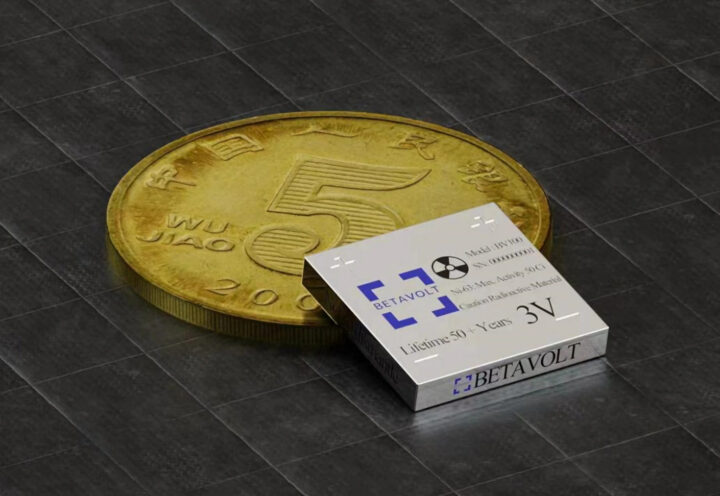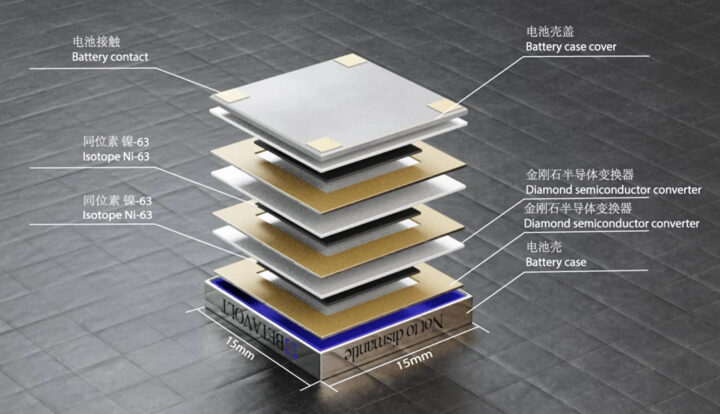Btavolt BV100 is a nuclear battery that never needs to be charged and designed to output 3V/100µW (microwatts) for over 50 years for the aerospace industry, AI equipment, medical devices, MEMS systems, advanced sensors, small drones, and micro-robots.
At 15x15x5mm, the 50-year nuclear battery is fairly small although 100 microwatts is not a lot of power… That’s only the first step, however, as the Chinese company plans to launch a 1W nuclear battery, and says that if (government) policies allow, nuclear batteries should eventually enable smartphones that never need to be charged and forever fly drones…
How does that all work? First, as Betavolt states in its press release (in Chinese), it’s not exactly new technical as in the 1960’s, the US and the USSR used betavoltaic batteries for the space programs. But those were relatively large and heavy, operated at high temperatures, and were expensive. Wikipedia mentions that one of the first consumer applications for this type of battery was pacemakers, but they were eventually dislodged by cheaper Lithium batteries.
What’s new are the materials involved namely radioactive nickel-63 with a half-life of about 100 years that decays into non-radioactive copper to produce electricity and a “single-crystal diamond semiconductor” developed by Betavolt’s scientists. The basic structure of the solution is comprised of a 2-micron-thick nickel-63 sheet placed between two 10-micron-thick diamond semiconductor converters. The battery stacks several of those and also comes with a case, case cover, and contacts.
The Wikipedia article mentions an invention from 2018 that looks similar: :
In 2018 a Russian design based on 2-micron thick nickel-63 slabs sandwiched between 10 micron diamond layers was introduced. It produced a power output of about 1 μW at a power density of 10 μW/cm3. Its energy density was 3.3 kWh/kg.
So it might be a collaborative effort between Russia and China. Check out the research paper for details.
“Nuclear” immediately raises safety concerns but a document from the Environmental Health and Safety Department of Oregon State University reports that Nickel-63 only travels 5.5cm in the air and 60μ in water. They further add:
Note that 63Ni presents no external dose hazard to humans except to lenses of eyes, and the 63Ni contact would have to be on the surface of the eye to produce a dose.
The radioactive material in the BV100 nuclear battery is also stored in a case, so it looks pretty safe to me. Ingesting the battery could become an issue – for example for young children – but I suppose those are supposed to be soldered to a board (TBC).
More powerful nuclear batteries that would be used with smartphones or drones may not be based on Nickel-63 as the company also experiments with other isotopes such as strontium-90, promethium-147, and deuterium to develop betavoltaic batteries with higher power and shorter service life of 2 to 30 years.
Via Tom’s Hardware

Jean-Luc started CNX Software in 2010 as a part-time endeavor, before quitting his job as a software engineering manager, and starting to write daily news, and reviews full time later in 2011.
Support CNX Software! Donate via cryptocurrencies, become a Patron on Patreon, or purchase goods on Amazon or Aliexpress






